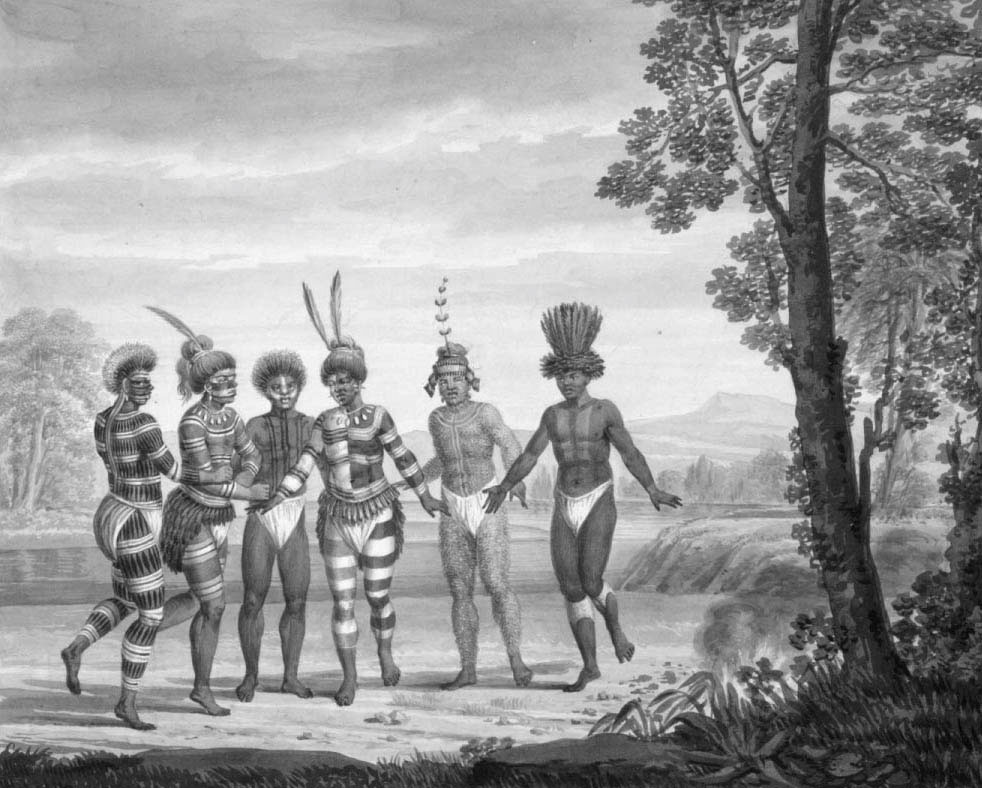|
Cultures Collide
On an October day in 1769, native villagers living on the coast south of
San Francisco
Bay
welcomed a party of Spanish explorers under the command of Gaspár de Portolá. This was one of the first documented encounters between Bay Area people and Europeans, and it foreshadowed the total disruption of traditional native life in central
California: In less than 30 years the Spanish would establish military presidios, civilian pueblos, and Catholic missions all around the Bay.
|
|
|
| The many people who lived along the Marsh Creek drainage were called Volvons—one of the related groups who were called Yokuts by early linguists (scientists who study languages). This drawing was done between 1803 and 1807 and is of Indians dancing at Mission San Jose. |
|
|
|
 |
|
|
| Drawing by German Artist Tilesius van Tilenau. Courtesy of the Bancroft Library, University of California, Berkeley. |
|
| From 1803 to 1808, more than 100 Volvons would be baptized at Mission San José or Mission San Francisco de Asis. All along the
East
Bay
and inland toward the San Joaquin Valley, native villages were deserted as people migrated to the missions—some willingly, others not: |
|
|
|
José and Lupe were born at a village about three miles northwest of the Marsh stone house. They showed me the place. I was there with them several times and I heard their story each time. The Spanish Cavalry raided the village in the early morning. They came in shooting, then chased the Indians and cut them down with espadas (sabres). They caught José and Lupe and about ten other young Indians…They tied them to a reata and led and herded them to Misión
San José.
José Antonio Águila
(as quoted in Frank F. Latta’s Handbook of Yokuts Indians)
|
|
|
|
At the same time hundreds of native people, both inside the missions and out, died during epidemics of measles, typhus, and other European diseases. By 1836 when the missions were secularized and stopped converting Natives, their populations were decimated and their traditional village life destroyed. Some of those who did survive made their way back to their deserted villages. When John Marsh took possession of Rancho de los Meganos in 1838, he found a small group of Volvons living there, only 30 miles from Mission San José.
|
|
|
|
 |
|
|
| Drawing of Mission San Jose about 1856. By Henry Miller. Courtesy of the Bancroft Library, University of California, Berkeley. |
|
|
(Next) (Back) (Home) |
|
|
|
|
|
|
|
|
|
|
|
|
|
|

